Hsuan-Tung Peng
Silicon photonic-electronic neural network for fibre nonlinearity compensation
Oct 11, 2021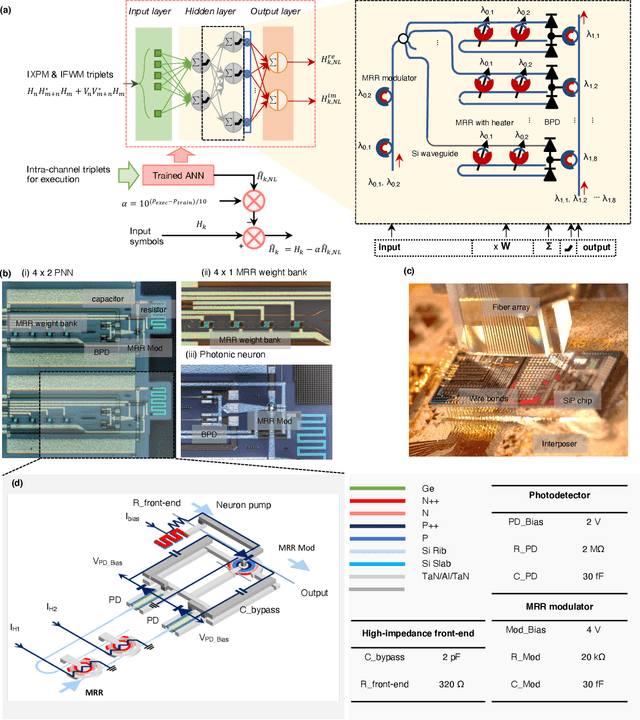
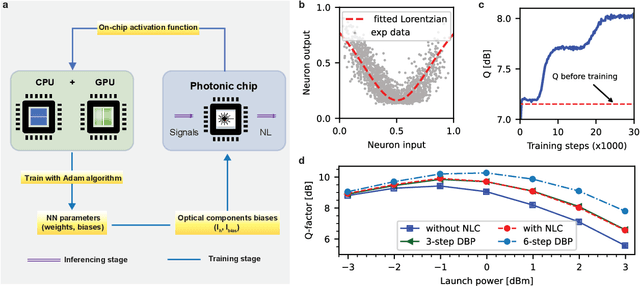
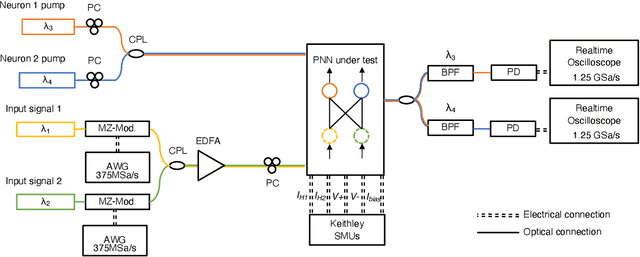
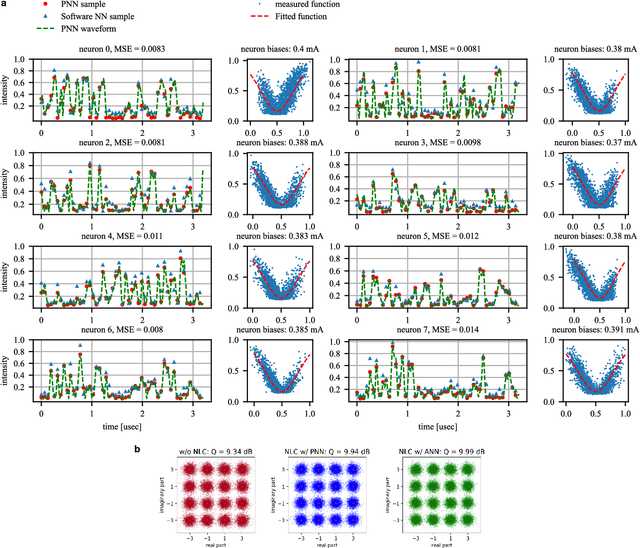
Abstract:In optical communication systems, fibre nonlinearity is the major obstacle in increasing the transmission capacity. Typically, digital signal processing techniques and hardware are used to deal with optical communication signals, but increasing speed and computational complexity create challenges for such approaches. Highly parallel, ultrafast neural networks using photonic devices have the potential to ease the requirements placed on the digital signal processing circuits by processing the optical signals in the analogue domain. Here we report a silicon photonice-lectronic neural network for solving fibre nonlinearity compensation of submarine optical fibre transmission systems. Our approach uses a photonic neural network based on wavelength-division multiplexing built on a CMOS-compatible silicon photonic platform. We show that the platform can be used to compensate optical fibre nonlinearities and improve the signal quality (Q)-factor in a 10,080 km submarine fibre communication system. The Q-factor improvement is comparable to that of a software-based neural network implemented on a 32-bit graphic processing unit-assisted workstation. Our reconfigurable photonic-electronic integrated neural network promises to address pressing challenges in high-speed intelligent signal processing.
A Photonic-Circuits-Inspired Compact Network: Toward Real-Time Wireless Signal Classification at the Edge
Jun 25, 2021



Abstract:Machine learning (ML) methods are ubiquitous in wireless communication systems and have proven powerful for applications including radio-frequency (RF) fingerprinting, automatic modulation classification, and cognitive radio. However, the large size of ML models can make them difficult to implement on edge devices for latency-sensitive downstream tasks. In wireless communication systems, ML data processing at a sub-millisecond scale will enable real-time network monitoring to improve security and prevent infiltration. In addition, compact and integratable hardware platforms which can implement ML models at the chip scale will find much broader application to wireless communication networks. Toward real-time wireless signal classification at the edge, we propose a novel compact deep network that consists of a photonic-hardware-inspired recurrent neural network model in combination with a simplified convolutional classifier, and we demonstrate its application to the identification of RF emitters by their random transmissions. With the proposed model, we achieve 96.32% classification accuracy over a set of 30 identical ZigBee devices when using 50 times fewer training parameters than an existing state-of-the-art CNN classifier. Thanks to the large reduction in network size, we demonstrate real-time RF fingerprinting with 0.219 ms latency using a small-scale FPGA board, the PYNQ-Z1.
Universal Adversarial Attacks with Natural Triggers for Text Classification
May 01, 2020



Abstract:Recent work has demonstrated the vulnerability of modern text classifiers to universal adversarial attacks, which are input-agnostic sequence of words added to any input instance. Despite being highly successful, the word sequences produced in these attacks are often unnatural, do not carry much semantic meaning, and can be easily distinguished from natural text. In this paper, we develop adversarial attacks that appear closer to natural English phrases and yet confuse classification systems when added to benign inputs. To achieve this, we leverage an adversarially regularized autoencoder (ARAE) to generate triggers and propose a gradient-based search method to output natural text that fools a target classifier. Experiments on two different classification tasks demonstrate the effectiveness of our attacks while also being less identifiable than previous approaches on three simple detection metrics.
Noise Analysis of Photonic Modulator Neurons
Jul 17, 2019
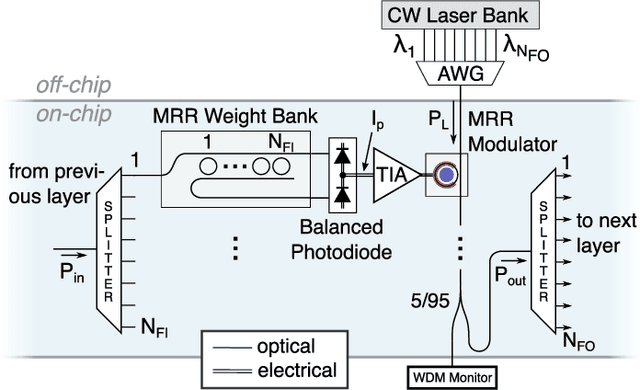
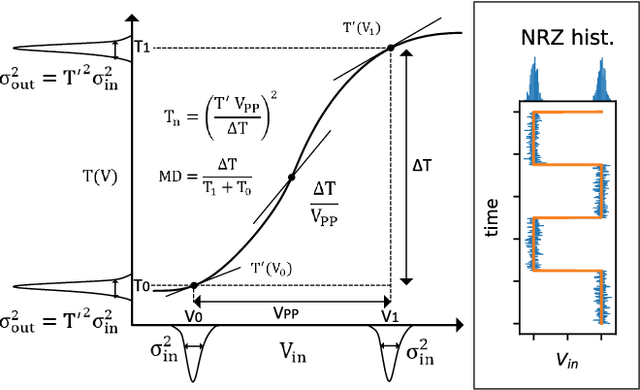
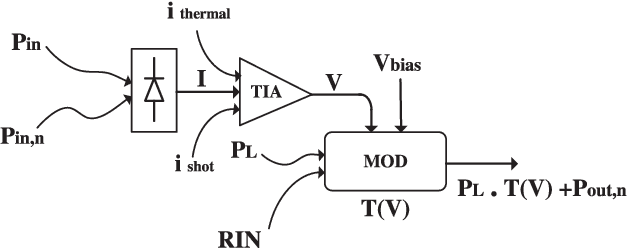
Abstract:Neuromorphic photonics relies on efficiently emulating analog neural networks at high speeds. Prior work showed that transducing signals from the optical to the electrical domain and back with transimpedance gain was an efficient approach to implementing analog photonic neurons and scalable networks. Here, we examine modulator-based photonic neuron circuits with passive and active transimpedance gains, with special attention to the sources of noise propagation. We find that a modulator nonlinear transfer function can suppress noise, which is necessary to avoid noise propagation in hardware neural networks. In addition, while efficient modulators can reduce power for an individual neuron, signal-to-noise ratios must be traded off with power consumption at a system level. Active transimpedance amplifiers may help relax this tradeoff for conventional p-n junction silicon photonic modulators, but a passive transimpedance circuit is sufficient when very efficient modulators (i.e. low C and low V-pi) are employed.
 Add to Chrome
Add to Chrome Add to Firefox
Add to Firefox Add to Edge
Add to Edge